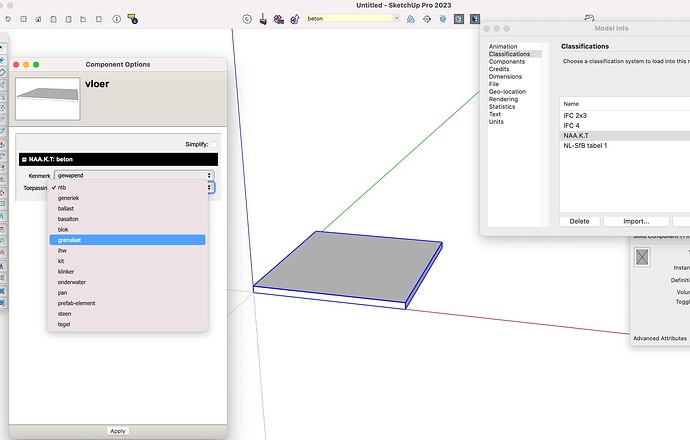In the Netherlands, the use of a uniform, machine-readable format is used for materials, called NAA.K.T.

Basically it goes from coarse to fine, Name_Application_Feature.
I have created a SketchUp Classification for it:
read here about creating your own classifcations:
https://help.sketchup.com/en/sketchup/classifying-objects
But wait, aren’t material compressed XML files, too?
I copied the material (.skm) to my desktop and renamed to .zip:
The document.xml has some info about the scale, avergae color and transformation:
DocumentProperties.xml declares what kind of type the document is:
What if I change the type to ‘Classification’?
Add info in the document (pasted from the NAA.K.T. classification, and add the schemas:
compress and rename to .skc in Finder
Import the classification in SketchUp:
Assign the classification to the object (yes, you can assign more than one classification tag to an object)
Choose application and feature:
This file contains the two classifications:
NAAKT_classification.skp (264,1 KB)
BTW, renaming the .skc file to a .skm file results in a ‘normal’ SketchUp material…
Edit: not sure if the additional material features are read correctly, though
@nnijmeijer, @brewsky any thought on this?










